Elon Musk’s rise to become the world’s richest person is a tale of ambition, innovation, and strategic risk-taking. Born in South Africa, Musk moved to North America to pursue his entrepreneurial dreams. He founded or co-founded a series of successful companies including PayPal, SpaceX, and Tesla.
Here’s how he became the richest man in the world…
First Entrepreneurial Ventures – Zip2

Elon Musk’s journey to becoming the world’s richest man began with Zip2, his first major entrepreneurial venture. In 1995, Musk co-founded the company with his brother Kimbal, aiming to provide online city guides and maps for newspapers.
Zip2 started as a small operation, with Musk working long hours and even sleeping at the office to keep costs down. The company faced initial struggles but persevered through Musk’s determination and innovative thinking.
The startup’s core product was a web-based platform that offered business directories and maps. This service proved valuable to newspapers looking to expand their online presence in the mid-1990s.
Musk’s role at Zip2 involved coding the software and managing business development. His work ethic and technical skills were crucial in driving the company’s growth and attracting investors.
In 1999, Compaq Computer Corporation acquired Zip2 for nearly $300 million. This sale marked Musk’s first significant financial success, netting him $22 million and providing capital for his future ventures.
Zip2’s success laid the foundation for Musk’s subsequent entrepreneurial endeavors. The experience gained and lessons learned during this period shaped his approach to business and innovation in later projects.
The PayPal Revolution And First Big Exit

Elon Musk’s journey to becoming the world’s richest man began with his involvement in PayPal. In 1999, Musk co-founded X.com, an online financial services company that later merged with Confinity to form PayPal.
As CEO of PayPal, Musk played a crucial role in the company’s growth and development. He expanded PayPal’s vision, transforming it into a successful international payment platform.
PayPal revolutionized online transactions by providing a secure and convenient way for people to send and receive money electronically. This innovation came at a time when e-commerce was rapidly growing, making PayPal an essential service for online businesses and consumers alike.
In 2002, eBay acquired PayPal for $1.5 billion. This acquisition marked Musk’s first major financial success, netting him approximately $180 million from the deal.
The PayPal exit provided Musk with the capital and experience necessary to pursue his next ventures. He used this newfound wealth to invest in and launch his subsequent companies:
- SpaceX (2002)
- Tesla (2004)
- SolarCity (2006)
These companies would later become the foundation of Musk’s vast fortune, propelling him to the top of global wealth rankings. The success of PayPal and its subsequent sale to eBay proved to be a pivotal moment in Musk’s entrepreneurial journey.
Betting It All On SpaceX – The Struggle And Breakthrough
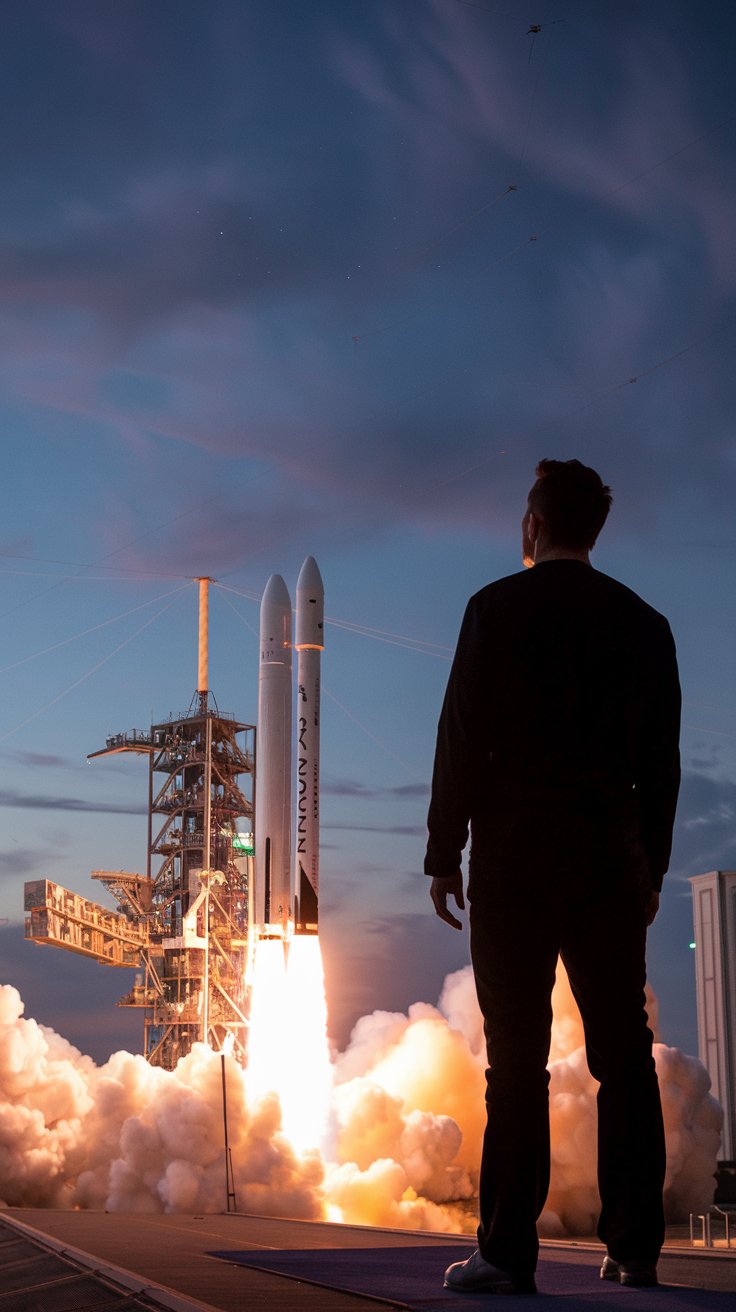
Elon Musk founded SpaceX in 2002 with the ambitious goal of revolutionizing space travel. The company faced significant challenges in its early years, including failed rocket launches and financial difficulties.
SpaceX’s first three rocket launches ended in failure, putting immense pressure on Musk and the company. With dwindling funds and mounting skepticism, Musk made a bold decision to invest nearly all of his remaining personal wealth into SpaceX.
This gamble paid off in September 2008 when SpaceX successfully launched its Falcon 1 rocket into orbit. This breakthrough marked a turning point for the company and validated Musk’s vision for private space exploration.
Following this success, SpaceX secured a $1.6 billion contract with NASA to transport cargo to the International Space Station. This partnership provided crucial funding and credibility for the company’s future endeavors.
SpaceX continued to innovate, developing reusable rocket technology that significantly reduced launch costs. The company’s Falcon 9 and Falcon Heavy rockets have since completed numerous successful missions.
Key achievements include:
- First private company to send a spacecraft to the ISS
- Development of the Crew Dragon spacecraft for human spaceflight
- Successful landing and reuse of orbital rocket boosters
These accomplishments have positioned SpaceX as a leader in the commercial space industry and contributed significantly to Musk’s growing wealth and influence.
Tesla – Turning An Idea Into An Industry Giant
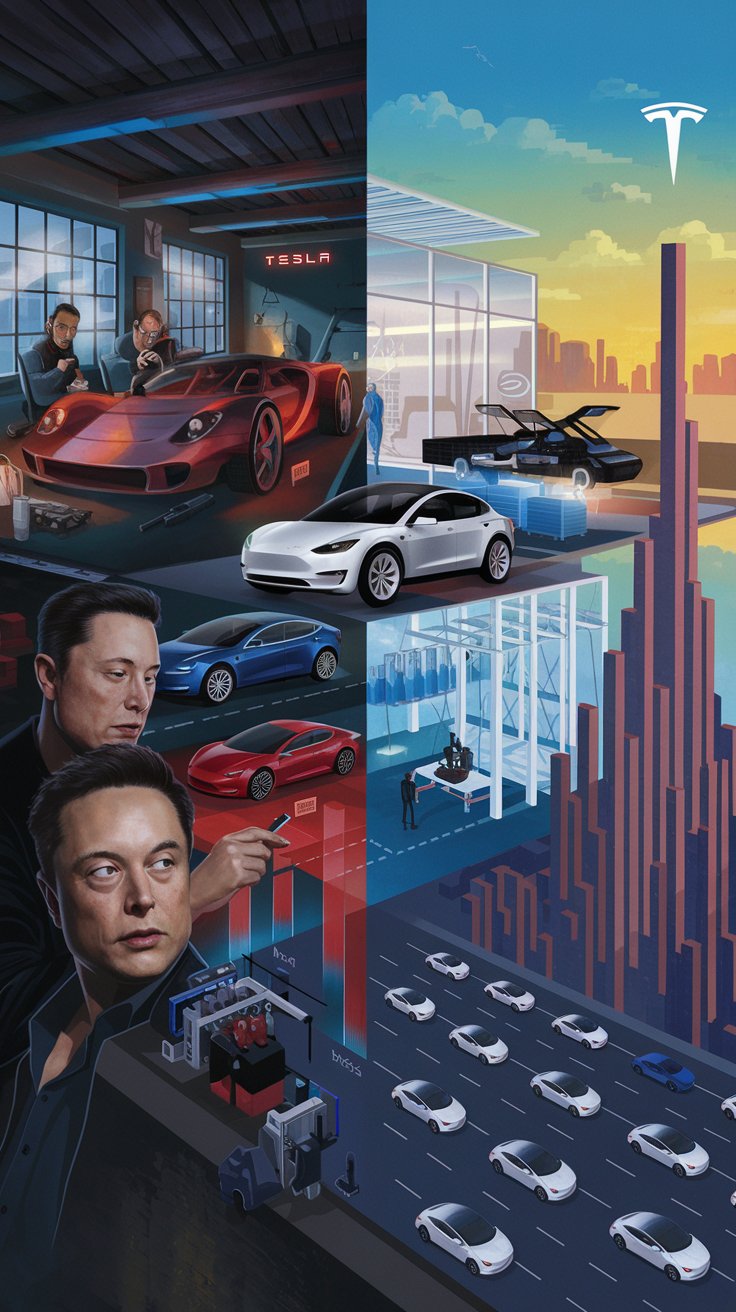
Elon Musk joined Tesla in 2004, investing $6.5 million and becoming the company’s largest shareholder. He took over as CEO in 2008 when Tesla was struggling financially and technologically.
Under Musk’s leadership, Tesla rapidly innovated in electric vehicle technology. The company focused on developing high-performance electric cars with long range and fast charging capabilities.
Tesla’s first mass-market vehicle, the Model S sedan, launched in 2012 to critical acclaim. It was followed by the Model X SUV in 2015 and the more affordable Model 3 sedan in 2017.
The company’s vertical integration strategy allowed for greater control over the manufacturing process. Tesla built its own battery factory, the Gigafactory, to reduce costs and increase production capacity.
Tesla’s direct-to-consumer sales model disrupted traditional auto dealership networks. This approach gave the company more control over the customer experience and pricing.
Musk’s ambitious goals and headline-grabbing antics kept Tesla in the spotlight. The company’s stock price soared, making it the world’s most valuable automaker by market capitalization in 2020.
Tesla’s success spurred traditional automakers to accelerate their own electric vehicle programs. The company’s innovations in battery technology, autonomous driving, and over-the-air software updates set new industry standards.
Expanding Into Solar And Energy With SolarCity
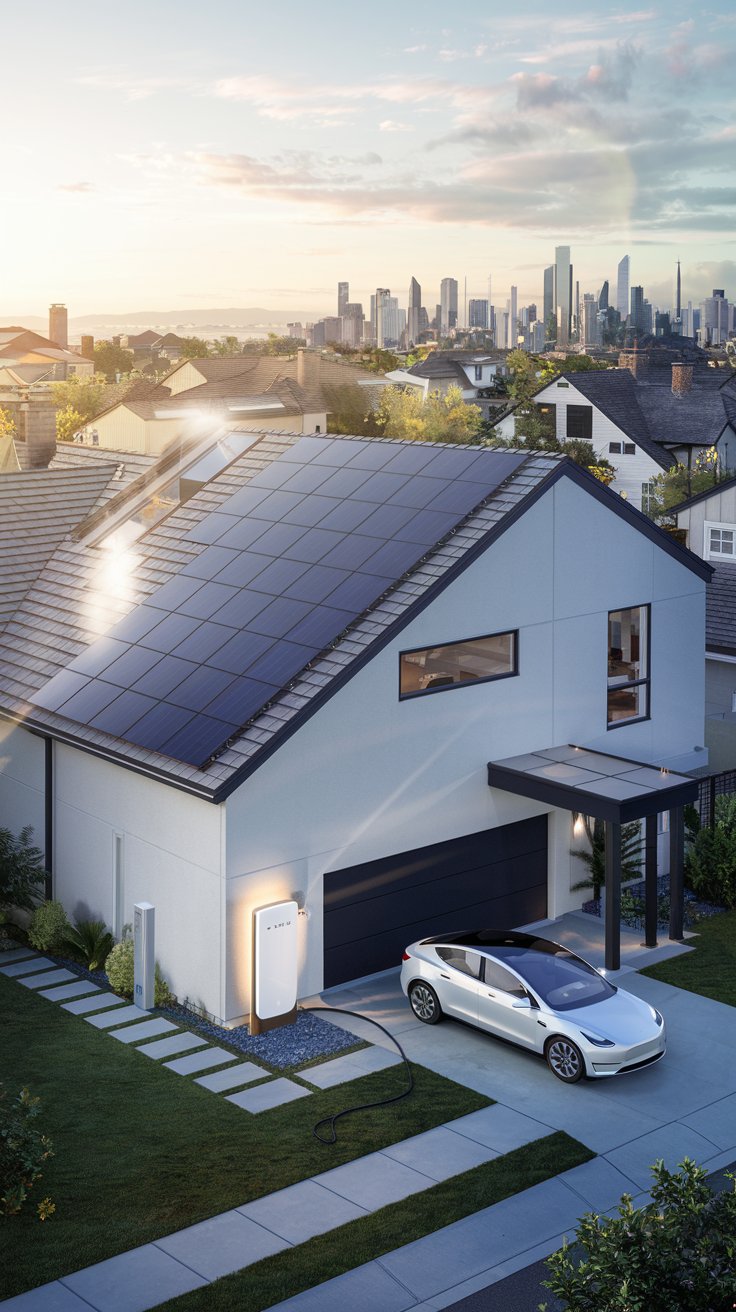
Elon Musk’s foray into renewable energy began with SolarCity, a company founded in 2006 by his cousins Lyndon and Peter Rive. Musk served as chairman and played a crucial role in shaping the company’s vision and strategy.
SolarCity quickly became a leading provider of solar energy systems in the United States. The company’s innovative approach made solar power more accessible and affordable for residential, commercial, and government customers.
In 2016, Musk proposed that Tesla acquire SolarCity for $2.6 billion. He argued that this acquisition aligned perfectly with Tesla’s mission to accelerate the world’s transition to sustainable energy.
The merger of Tesla and SolarCity created a vertically integrated clean energy company. This move allowed Musk to offer a complete sustainable energy solution, combining electric vehicles, solar panels, and energy storage systems.
SolarCity’s integration into Tesla expanded Musk’s influence in the renewable energy sector. It enabled him to develop and market products like the Solar Roof, which combines solar panels with traditional roofing materials.
This strategic expansion into solar and energy storage complemented Musk’s electric vehicle business. It positioned him as a key player in the global shift towards sustainable energy solutions.
The Rise Of Gigafactories – Scaling EV Production
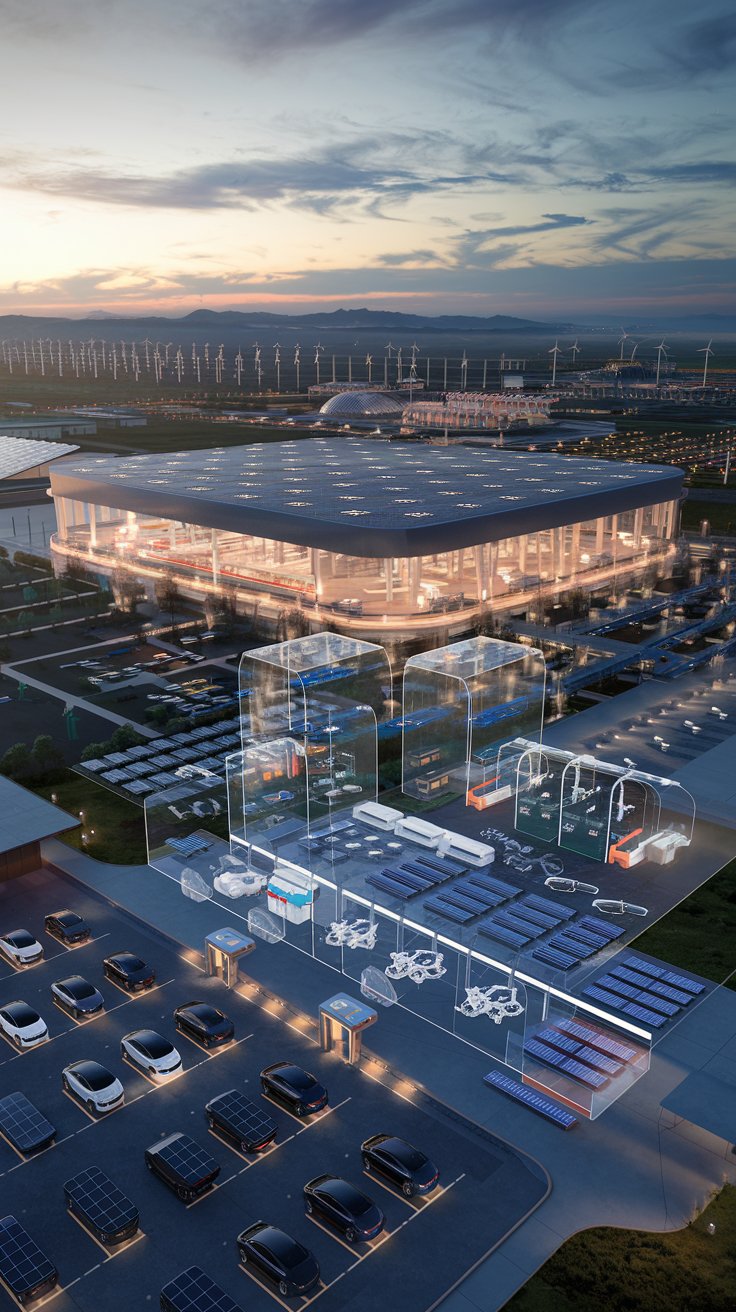
Elon Musk introduced the concept of Gigafactories in 2013 as a revolutionary approach to manufacturing electric vehicles (EVs) and their components. These massive facilities are designed to produce batteries and other crucial parts for Tesla’s electric cars at an unprecedented scale.
The first Tesla Gigafactory opened in Nevada in 2016. It marked a significant milestone in the company’s mission to accelerate the world’s transition to sustainable energy.
Gigafactories play a critical role in scaling up EV production. By centralizing the manufacturing process, Tesla can reduce costs, improve efficiency, and increase output. This approach has been instrumental in making electric vehicles more affordable and accessible to consumers.
The impact of Gigafactories extends beyond Tesla. Other automakers have begun adopting similar large-scale production facilities to compete in the rapidly growing EV market.
Key benefits of Gigafactories include:
- Economies of scale
- Reduced transportation costs
- Improved quality control
- Increased innovation potential
Musk’s vision for Gigafactories is ambitious. He has suggested that 100 such facilities could potentially power the entire world with renewable energy. While this claim may be optimistic, it underscores the transformative potential of large-scale sustainable manufacturing.
As Tesla continues to expand its Gigafactory network globally, these facilities are becoming increasingly central to the company’s strategy. They represent a significant investment in the future of electric vehicles and sustainable energy production.
Starlink And The Global Internet Vision
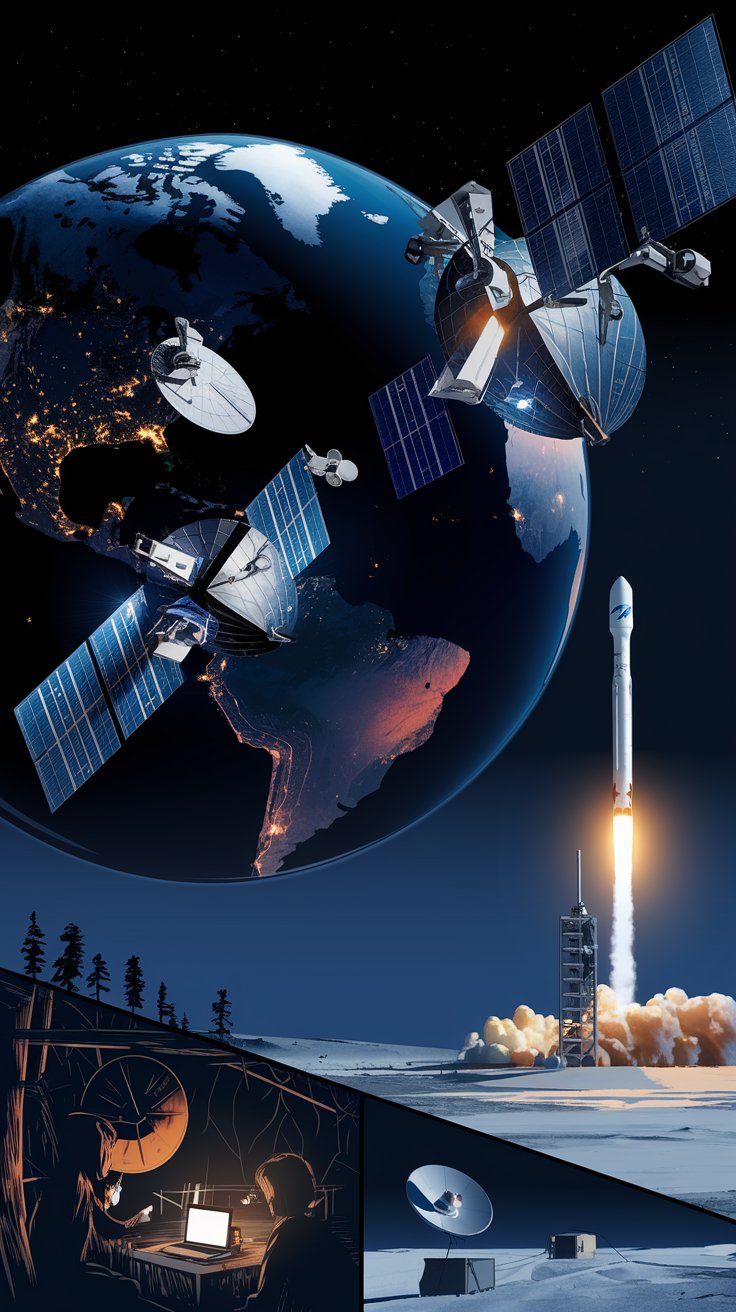
Elon Musk’s Starlink project aims to revolutionize global internet connectivity. The ambitious venture involves deploying thousands of low Earth orbit satellites to provide high-speed internet access worldwide.
Starlink’s primary goal is to serve remote and underserved areas with limited or no internet infrastructure. This aligns with Musk’s vision of a fully connected world, bridging the digital divide that exists in many regions.
The satellite constellation offers significantly faster connection speeds compared to traditional satellite internet services. This technological advantage positions Starlink as a potential game-changer in global telecommunications.
SpaceX, Musk’s aerospace company, is integral to Starlink’s success. The synergy between the two ventures allows for cost-effective satellite launches and rapid expansion of the network.
Starlink has already begun providing service to customers in select areas. As the satellite network grows, its coverage is expected to expand, potentially reaching even the most remote corners of the globe.
The financial potential of Starlink is substantial. It has become a significant revenue generator for SpaceX, contributing billions to the company’s valuation and Musk’s personal wealth.
Musk envisions Starlink as more than just a profitable venture. It plays a crucial role in his long-term plans, potentially funding ambitious projects like the colonization of Mars.
AI And Neuralink – Investing In The Future Of Technology

Elon Musk’s ambitions extend beyond electric cars and space exploration. He has invested heavily in artificial intelligence and brain-computer interfaces through his company Neuralink.
Neuralink aims to develop brain implants that can interface directly with computers. The technology could potentially help people with neurological conditions or spinal cord injuries regain mobility and communication abilities.
In early 2025, Neuralink successfully implanted its first brain chip in a human patient. This milestone marked a significant step forward in Musk’s vision of merging human cognition with AI.
The company continues to refine its technology, including an upgraded device and improved surgical robot for implantation. Musk envisions far-reaching applications beyond medical uses.
His ultimate goal is to achieve “human/AI symbiosis” – a direct interface between the human brain and artificial intelligence. Musk considers this development crucial for humanity’s future.
Critics raise ethical concerns about brain-computer interfaces. Supporters argue the technology could unlock human potential and solve complex problems.
Regardless of one’s stance, Musk’s investments in AI and Neuralink demonstrate his commitment to shaping the future of technology. These ventures may prove as transformative as his efforts in sustainable energy and space travel.
The Boring Company And Underground Innovation
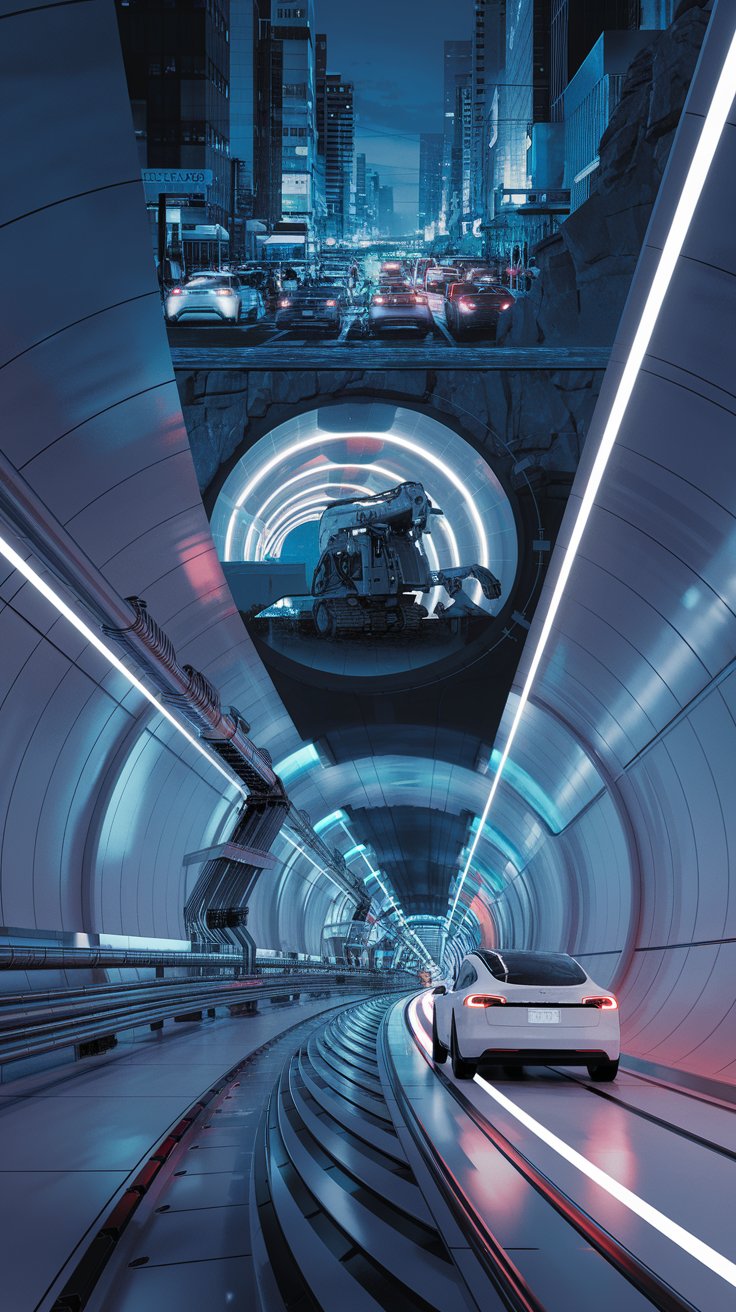
Elon Musk founded The Boring Company in 2016 to tackle urban traffic congestion through innovative underground transportation solutions. The company aims to construct safe, affordable, and eco-friendly tunnels to improve transportation efficiency.
The Boring Company’s primary focus is developing advanced tunneling technology. By reducing tunnel diameters and increasing boring speeds, they aim to significantly lower construction costs and timelines.
One of the company’s notable projects is the Las Vegas Convention Center Loop. This underground transportation system uses Tesla vehicles to transport passengers through tunnels, showcasing the potential of Musk’s vision.
The company’s ambitious plans include expanding their tunnel networks to create vast underground transportation systems in major cities. These systems could potentially revolutionize urban mobility and reduce surface-level traffic.
Critics have questioned the scalability and practicality of The Boring Company’s proposals. Nevertheless, Musk’s track record of turning innovative ideas into reality has garnered significant interest and support for the venture.
The Boring Company represents another facet of Musk’s diverse business portfolio. It demonstrates his commitment to addressing real-world problems through technological innovation, contributing to his status as a leading entrepreneur and innovator.
Acquiring Twitter And The X Vision

In 2022, Elon Musk made headlines with his $44 billion acquisition of Twitter. The deal faced initial hurdles and legal challenges before being finalized in October of that year.
Upon taking ownership, Musk swiftly implemented major changes. He fired top executives and reduced the workforce significantly, citing the need for cost-cutting measures.
Musk rebranded Twitter as “X” in July 2023, aligning it with his vision of an “everything app.” This move aimed to expand the platform beyond social media into areas like payments and messaging.
The transition to X came with controversies. Musk’s emphasis on “free speech” led to changes in content moderation policies, sparking debates about misinformation and hate speech on the platform.
Key changes under Musk’s leadership included:
- Introducing paid verification through Twitter Blue
- Modifying the algorithm for content visibility
- Removing legacy verified badges
- Launching new features like longer tweets and voice chat rooms
Musk’s goal for X extends beyond traditional social media. He envisions a multi-functional platform that could potentially rival super apps like China’s WeChat.
The acquisition and subsequent transformation of Twitter into X demonstrate Musk’s ambitious plans to reshape digital communication and services. The long-term impact of these changes remains to be seen.
Mastering Publicity And Personal Branding
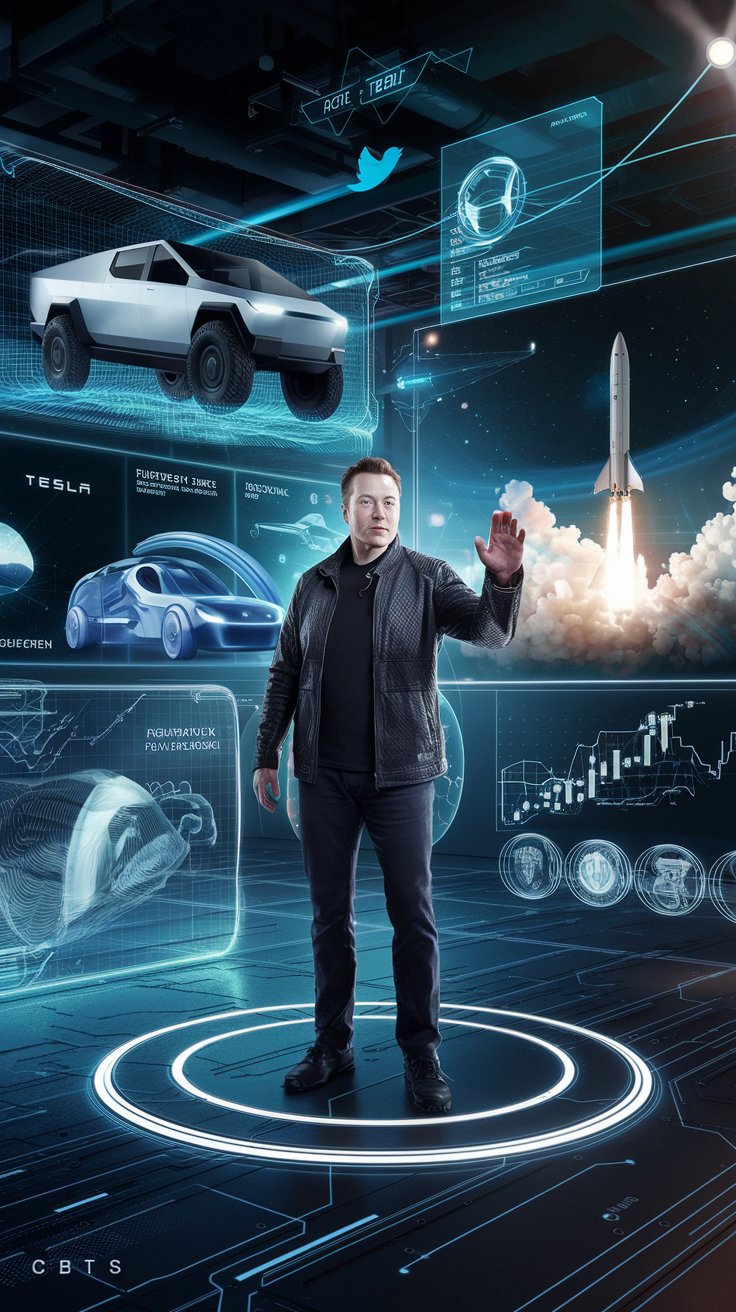
Elon Musk’s rise to becoming the world’s richest man is inextricably linked to his mastery of publicity and personal branding. His unique approach to communication and self-promotion has captivated global audiences and shaped his public persona.
Musk’s personal brand is a blend of visionary entrepreneur, innovative thinker, and unapologetic risk-taker. He leverages social media platforms, particularly Twitter, to share his thoughts, announce company updates, and engage directly with his followers.
His bold vision for the future, encompassing electric vehicles, space exploration, and neural technology, forms a core part of his brand identity. Musk consistently aligns his public statements with these ambitious goals, reinforcing his image as a forward-thinking leader.
Controversy often surrounds Musk’s public statements, yet this tends to amplify his media presence rather than diminish it. His willingness to challenge conventional wisdom and make provocative statements keeps him in the spotlight.
Musk’s personal brand is further strengthened by his active involvement in multiple high-profile companies. This diversification allows him to remain relevant across various industries and maintain public interest.
Key elements of Musk’s branding strategy:
- Consistent messaging aligned with futuristic vision
- Direct communication through social media
- Embracing controversy and challenging norms
- Showcasing technical expertise and hands-on leadership
- Leveraging cross-industry involvement
By mastering these aspects of publicity and personal branding, Musk has created a powerful public image that has contributed significantly to his business success and wealth accumulation.
Government Contracts, Subsidies, And Strategic Partnerships

Elon Musk’s rise to become the world’s richest person is closely tied to government support and partnerships. His companies have benefited significantly from public funding and contracts.
SpaceX has secured billions in NASA contracts for satellite launches and crewed missions to the International Space Station. These agreements provided crucial revenue streams as the company developed its rocket technology.
Tesla received a $465 million low-interest loan from the U.S. Department of Energy in 2010, which it repaid early. The company has also benefited from federal tax credits for electric vehicle purchases.
State and local governments have offered tax incentives to attract Tesla factories. Nevada provided $1.3 billion in incentives for the Gigafactory, while Texas offered tax breaks for the Austin manufacturing plant.
SolarCity, now part of Tesla, received over $490 million in grants from the U.S. Treasury Department. The company also benefited from federal solar investment tax credits.
These government partnerships and incentives have played a key role in the growth of Musk’s companies. They provided financial support and reduced risks during critical development phases.
While Musk’s innovations have driven his success, taxpayer-funded programs and contracts have contributed significantly to his wealth accumulation. This combination of private sector innovation and public sector support has been instrumental in his rise to the top of global wealth rankings.
Tesla’s Stock Boom And Market Domination
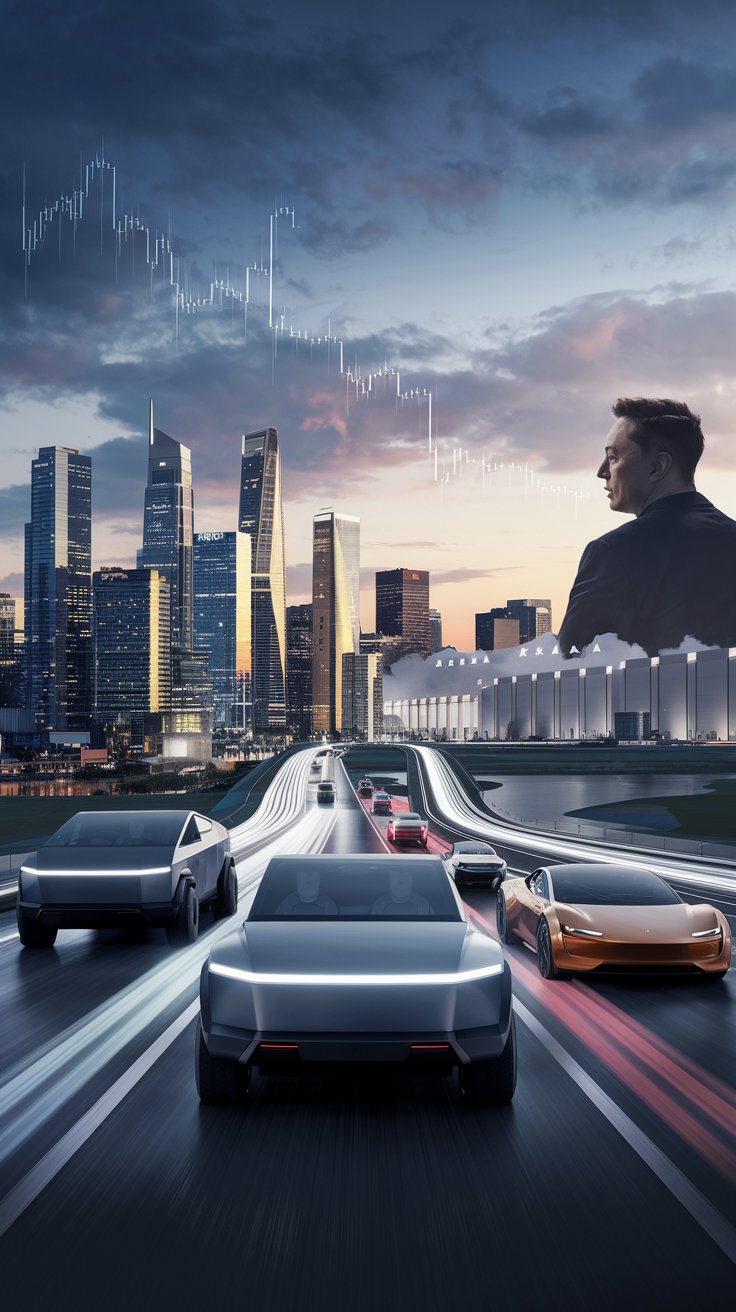
Tesla’s meteoric rise in the stock market has been a key factor in Elon Musk’s ascent to becoming the world’s richest person. The electric vehicle maker’s market value reached unprecedented heights, surpassing $1 trillion in 2022 and later hitting $1.5 trillion.
This remarkable growth has been fueled by Tesla’s increasing production and sales of electric vehicles. The company successfully overcame early manufacturing challenges, dramatically ramping up production to meet growing demand.
Tesla’s stock price surge has had a direct impact on Musk’s personal wealth. As the company’s largest individual shareholder, owning approximately 20% of Tesla’s stock, Musk has seen his net worth skyrocket.
In 2020 alone, Musk’s wealth grew by over $150 billion, primarily due to Tesla’s stock performance. By 2025, his net worth reached a staggering $486 billion, setting new records for individual wealth.
Tesla’s market dominance extends beyond just its stock value. The company has established itself as a leader in the electric vehicle industry, consistently outpacing competitors in sales and technological innovation.
Key factors contributing to Tesla’s success include:
- Innovative electric vehicle technology
- Expanding global production capabilities
- Strong brand loyalty among consumers
- Continuous improvements in battery technology and range
As Tesla continues to grow and dominate the electric vehicle market, its stock performance remains a crucial element in Elon Musk’s position as the world’s wealthiest individual.
The Billionaire Mindset – Work Ethic, Risk, And Vision
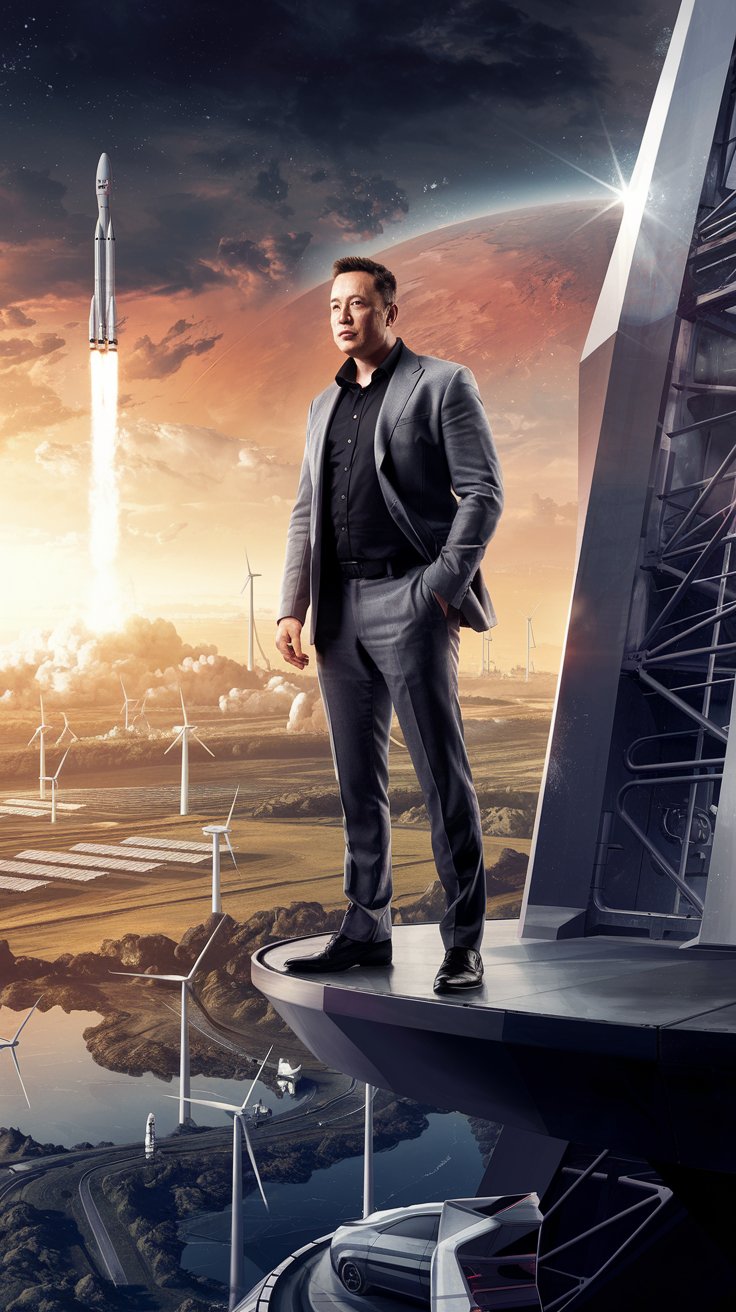
Elon Musk’s rise to become the world’s richest man stems from his exceptional mindset. At the core of his success lies an unwavering work ethic, a willingness to take calculated risks, and a visionary outlook.
Musk is renowned for his grueling work schedule, often putting in 80-100 hour weeks. He has been known to sleep on the factory floor during critical production periods, demonstrating his commitment to hands-on problem-solving.
Risk-taking is another hallmark of Musk’s approach. He invested nearly all of his PayPal earnings into SpaceX and Tesla, two highly ambitious and risky ventures. This bold move paid off tremendously, cementing his position as a leading innovator.
Vision drives Musk’s endeavors. He doesn’t just aim to create successful companies; he seeks to revolutionize entire industries. His goals include making humanity a multi-planetary species and accelerating the world’s transition to sustainable energy.
Musk’s ability to see beyond current limitations allows him to pursue groundbreaking projects. This forward-thinking mindset attracts top talent and inspires teams to push boundaries.
By combining relentless work ethic, calculated risk-taking, and a transformative vision, Musk has created a blueprint for extraordinary success. His approach serves as a model for aspiring entrepreneurs and business leaders worldwide.